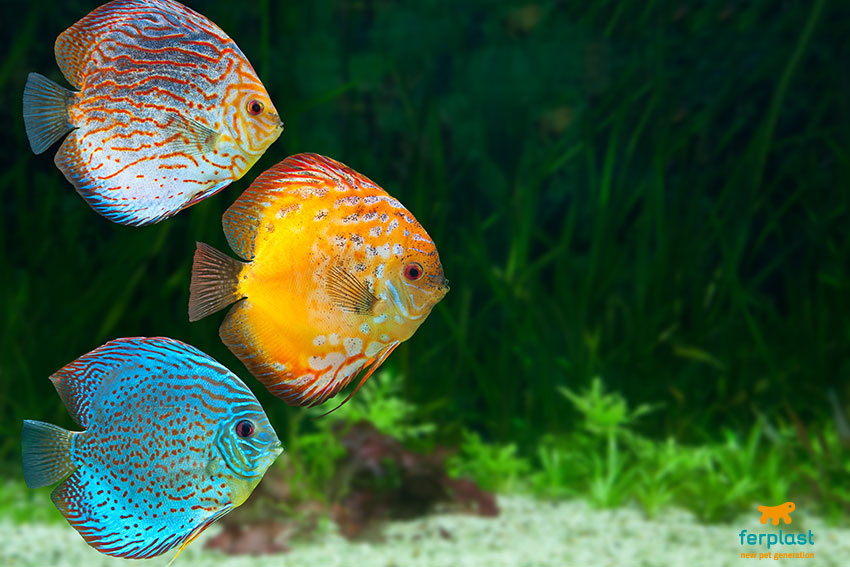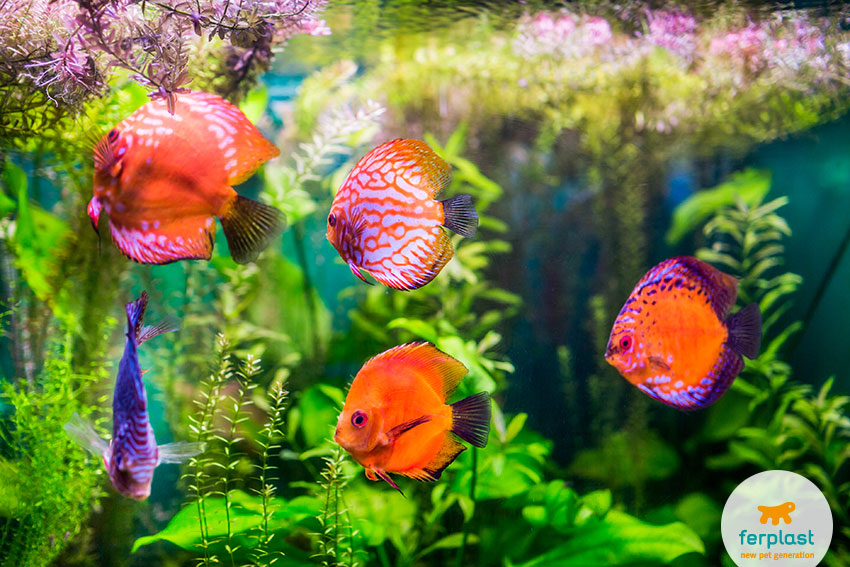Fishkeeping is a passion for both adults and children. Who hasn’t experienced the fascination of watching fish swimming around their water world? Taking up this hobby may seem difficult, but it’s not as complicated as you may think. Just a handful of basic notions are enough to get you started, and then you’ll learn as you go. Of course, starting with the most difficult plants and fish is never a good idea, so stick to guests that are not particularly demanding at first.
How to go about setting up an aquarium.
- Choosing a tank. You can either pick a tank according to your own needs and to the number of fish you wish to host, or you can select your fish based on the characteristics of the tank you want to purchase. There are tanks of different sizes and shapes available in the market, such as cubical, rectangular, with rounded glass, corner aquariums, closed or open tanks, or sporting particular designs.
- Stand and suitable position. A fish tank filled with water weighs considerably, which is why it’s advisable to purchase a fish tank support rather than a piece of furniture which may prove to be not sturdy enough. The tank must be put in a place with reasonably constant temperature and lighting, but never exposed to direct sunlight, which promotes the growth of algae.
- Lighting. Fish tanks available in the market are usually equipped with light bulbs designed to ensure the maintenance of the flora and the fauna of a sweet water tank. A word of advice: if after a certain period of time your plants seem to have stopped growing, the cause may be in the light bulbs – try replacing them. LED are preferable to traditional fluorescent lights, as they generate less heat and make the colours of the fish stand out. Finally, remember that fish also sleep! Don’t leave the light on at all times.
- Filter and heater. No tank can work properly without a filter to clean the water by removing waste products, food remains, dead plants etc. Without a filter, the water in the tank would become toxic in the blink of an eye. If the fish tank model you’ve purchased doesn’t come with a filter, install one whose capacity is suitable for the tank. The water heater, if not included with the tank, is fundamental to keep the temperature constant.
- Bottom and tank set up. After buying an aquarium, you must now prepare the bottom with either gravel or sand (a layer approximately 5-7 cm thick). Then choose fish tank accessories available in the market; they’re made specifically for permanent contact with water. There’s plenty of choice, so feel free to go crazy: antique amphorae, crumbled bridges, strangely shaped rocks… They’ll all be perfect to decorate your aquarium.
- Filling. Now it’s time to fill your tank with potable water, up to approximately 2 cm from the upper edge. To do this without messing up the bottom, start with just a bit of water and then gradually fill it in. Once it’s full, get the filter started and install the heater.
- Empty cycle and settling the fish. Don’t simply release the fish in the water; the aquarium needs a “trial” stage until water reaches optimal quality. To do this, run an empty cycle, which may last up to 2 weeks. During this period of time, keep an eye on water parameters: when the values of ammonia, nitrites and nitrates peak and then plummet to zero, the tank is ready to host your fish. To keep these values stable, release only a few fish at a time in the tank, waiting about 10 days in between “batches”.
Knowing what you’re doing is the most important rule. Before you release any living being in the tank, do your homework and make sure you’re familiar with their needs and their compatibility with the other inhabitants.


